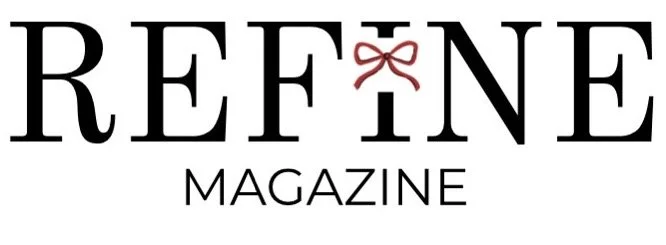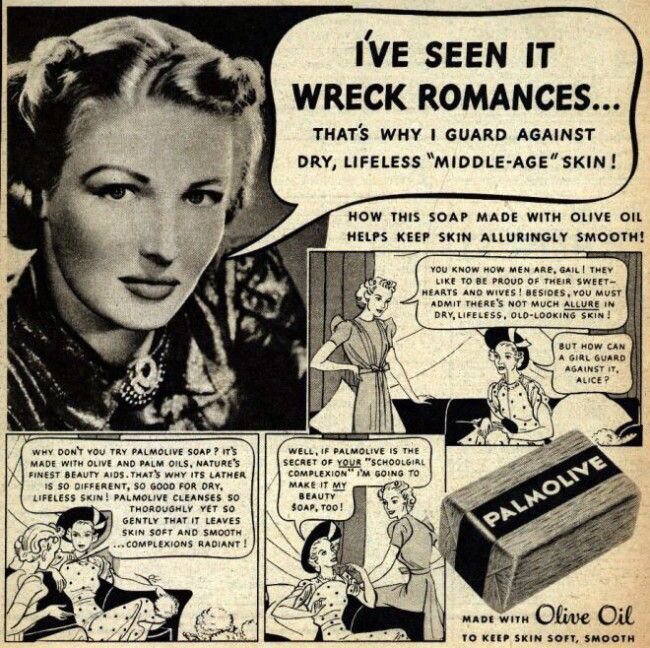Unpacking the Antiaging Myth
By: Maryam Siddiqui
Skincare has had a rebrand from the chore we might have deemed it as young teens to a luxurious self-care experience and fun hobby. Twitter, YouTube, and TikTok are all full of tips, tutorials, and documented skincare journeys.
Consumers are branching out beyond the usual Neutrogena and Clinique for the typical cleanser-toner-moisturizer schtick to cult favorite brands from overseas for chemical exfoliants and sunscreens.
While people are discovering the impressive powers of ingredients like retinol on their journeys, the underlying motives can be a little concerning. A major goal for women with skincare is preventing or reversing signs of aging, namely wrinkles.
While you can argue that this is a natural desire that has existed since the beginning of history, much like eliminating acne for teens, the beauty industry’s messaging has morphed it into a greater societal norm that has convinced women that aging is ugly.
The beauty industry has long pushed the idea that the youthful look is the only look. In the 1880s, Frownies, an adhesive patch meant to prevent skin from wrinkling, was developed after a mother saw “unsightly frown lines” on her daughter’s face. A 1929 ad for a skin treatment warns of how mere facial expressions can “wrinkle your youth away.” And vintage Palmolive Soap ads promise to protect women from dreaded “middle-age skin” as it can “wreck romances”.
Palmolive Ad from 1945// Via Reddit
While the fear mongering has faded away over the years, these ideas are still present in modern marketing. In more recent years, we have been faced with popular products such as Olay Regenrist, promising to make women look “ageless”, and Estee Lauder’s Advanced Night Repair serum claiming to “reverse the key signs of aging.” As expected, the commercials feature women without a wrinkle in sight.
Even on a smaller scale, these sentiments prevail. Popular Skincare YouTubers such as Dr. Dray, Liah Yoo, and Mixed Makeup have countless videos on looking “young” and anti-aging skincare practices.
Sometimes, these ideas aren’t so obvious. They might not be the main focus of a video, but offered as tips in passing:
“Sunscreen is your best defense against wrinkles.”
“Take care of your hands and neck; they’re the first to show age.”
“Avoid pulling on your skin; it can cause premature wrinkles.”
They can appear as recommendations to start eye creams and anti aging regimens as early as possible.
On social media platforms like Twitter and Instagram, we are also faced with celebrities who don’t seem to age. We see side-by-side photos of celebrities like Jada Pinkett-Smith, Jennifer Lopez, and Jennifer Anniston, often more than a decade apart with barely any differences between them.
70-year-old designer Vera Wang made waves recently as she posted photos of herself where she could pass for another 20-year-old influencer on the platform. Followers and media outlets praised her for having abs and legs for days instead of wrinkles or cellulite.
Meanwhile, actresses like Renee Zellweger are shamed for showing wrinkles and not resembling the 20-somethings they played decades ago. Hollywood as a whole is known for ageism against older actresses as they don’t fit the youthful image of beauty and sexuality the industry values.
The overarching message from all these angles seems to be: looking old when you’re old is bad. If you’re over 25 and someone can accurately guess your age, you must be doing something wrong.
But why is that? Why did looking 50 when you are in fact 50 become such an awful taboo?
This messaging has both contributed to and benefitted from a deep fear of aging in young women. A study conducted by OnePoll for Dermstore in 2017 found that almost 30% of women under 25 “‘regularly’ worry about their signs of aging.” This jumps to more than 40% in women 25-34.
These worries can lead to women in as early as their teens obsessively trying all sorts of products, procedures, gadgets, and tricks to ward off any hints of laugh lines or crow’s feet.
The skincare industry has made a hefty fortune off these insecurities in women. The anti-aging cosmetic industry was valued at around 40 billion in 2018 and projected to grow to over 60 billion by 2026. An InStyle article estimated that a woman can spend between $11,000 and almost $200,000 during her life on anti-aging creams based on popular options at various price points.
Photo by Liubov Ilchuk on Unsplash
While it’s not unusual for the beauty industry to play on women’s insecurities, such as stretchmarks and acne, for their advantage, this specific stigma goes beyond wrinkles being deemed unsightly. It stems from the idea that youth is the default for beauty and that’s what a woman should strive for. It plays into the trope that her age should be a dirty secret that needs to be covered up.
Some argue against this with the common saying “growing older is a privilege denied to many,” as a reason to not be ashamed of wrinkles. Or they talk about the other more important things we gain as we age: experience, wisdom, contentment.
These are valid points, but getting older shouldn’t have to be flipped as a grand journey or achievement in order to be okay. It’s just one of the basic realities of life: as time goes on, you get older, and you look older.
Luckily, some companies and organizations have recognized this and are trying to combat it. In 2017, Allure announced that it was going to remove the phrase “anti-aging” from its magazine in an effort to help women embrace the aging process.
This isn’t to shame anyone who wants to avoid wrinkles and looking older. If anti-aging is your cup of tea, then sip away. Just like with body hair or stretch marks, we all have preferences on what we look like. And it’s certainly impressive for actresses like Jennifer Anniston and Will Smith to bear such a resemblance to their younger selves.
However, just like with body hair removal, it’s important to understand where these desires may be coming from, particularly if it’s an entire industry kneading yet another insecurity into young women for profit’s sake.
There are so many other more concrete worries that come with aging: weaker bodies, brain degeneration, social isolation. Are wrinkles really so bad in the grand scheme of things? Moreover, aging is a natural process, and it shouldn’t be painted as yet another battle for women to fight with countless creams.
Cover Photo by Anastasiia Ostapovych on Unsplash



